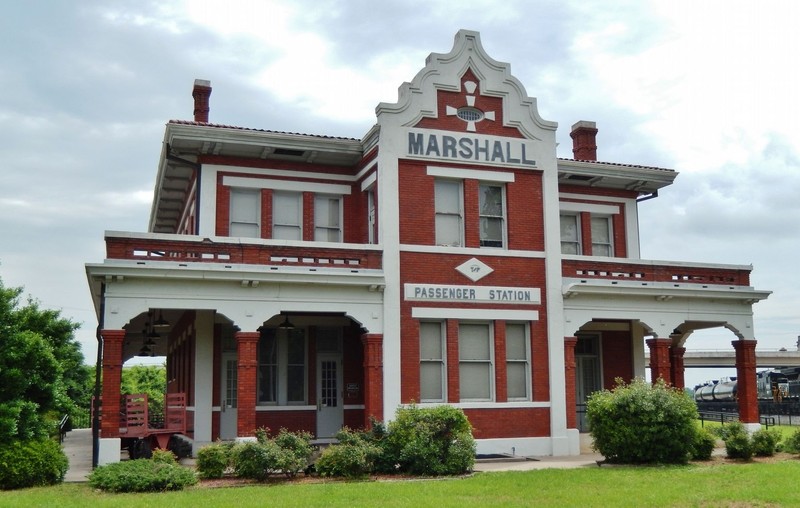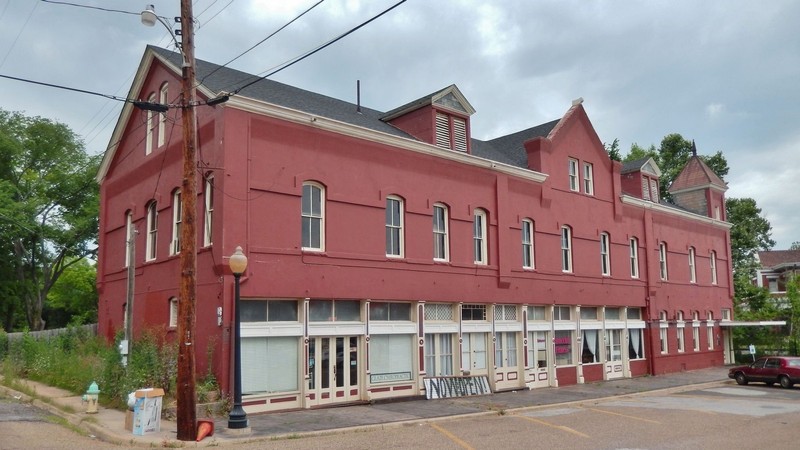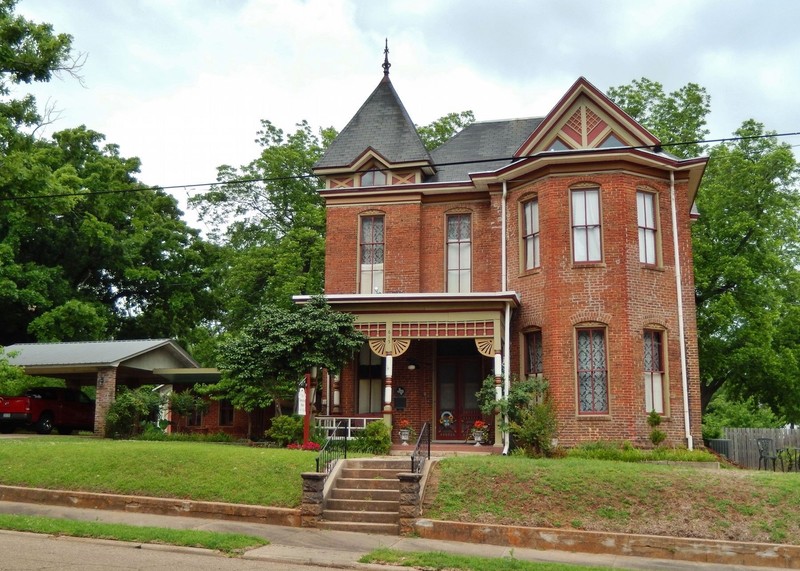Ginocchio Historic District
Introduction
Text-to-speech Audio
Images
The Texas & Pacific Depot was built in 1912 and houses a museum and an Amtrak ticket office.

The former Ginocchio Hotel was built in 1896 and is now home to a restaurant.

Italian businessman Charles A. Ginocchio erected this Queen Anne house in 1886.

Backstory and Context
Text-to-speech Audio
Texas & Pacific Railway Museum
The Texas & Pacific Railway built the depot in 1912. Its design combines the Prairie School and Mediterranean architectural styles, which, with its red brick exterior, gives it a distinctive appearance. The depot is the only building remaining that was once part of a large railroad complex. The museum features a variety of railroad artifacts and memorabilia on display, exhibits describing the history of the depot and railroad shops, and interactive displays such as a model train and pull whistle.
Ginocchio Hotel
Ginocchio built the hotel in 1896. The three-story building was designed by a man named C.G. Lancaster, who also helped design the old Harrison County Courthouse. Lancaster designed the hotel to withstand the vibrations caused by the passing trains nearby. As such, the building features twenty-inch thick brick walls set on an ironstone foundation ten feet into the ground. Stores, a cafe, lobby, ballroom, and dining room occupied the first floor; the hotel rooms were located on the second and third floors. In the early 1900s, large numbers of immigrants passed through Marshall on the Texas & Pacific Railroad. To feed them, the hotel served buffet-style meals on long tables in the ballroom, which could accommodate 300-400 people. They had to eat quickly as the train stopped for only 45 minutes. The hotel operated until 1968. It was remodeled (and saved from demolition) and opened as a restaurant.
Ginocchio House
Lancaster also designed Ginocchio's home, which he built in 1886. It is three-stories tall and a fine example of Queen Anne architecture, featuring an irregular, steeply pitched roof (including pyramidal roofed cupola topped by a finial), and a porch with wood columns, spindlework and lace-like brackets. The interior features elaborate woodwork created by craftsmen from the nearby railroad shops. The house remains a private residence today.
Sources
"Ginocchio-Cook-Pedison House." The Historical Marker Database. Accessed October 14, 2020. https://www.hmdb.org/m.asp?m=110906.
"Ginocchio Hotel and Restaurant." The Historical Marker Database. Accessed October 14, 2020. https://www.hmdb.org/m.asp?m=110872.
Hume, Gary et al. "Ginocchio Historic District." National Park Service - National Register of Historic Places Nomination Form. December 31, 1974. https://catalog.archives.gov/OpaAPI/media/40972519/content/electronic-records/rg-079/NPS_TX/74002076.pdf.
"Marshall: Texas and Pacific Railroad Museum/Depot." Accessed October 14, 2020. https://texasforesttrail.com/plan-your-adventure/historic-sites-and-cities/sites/texas-and-pacific-railroad-museumdepot.
"Texas & Pacific Depot." The Historical Marker Database. Accessed October 14, 2020. https://www.hmdb.org/m.asp?m=110873.
All images via The Historical Marker Database
